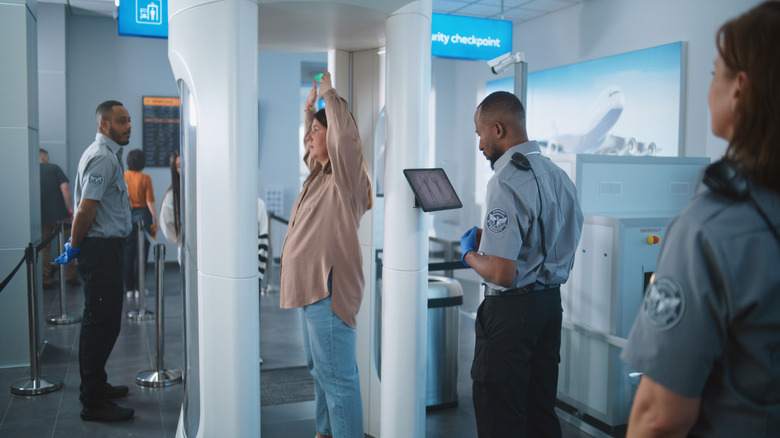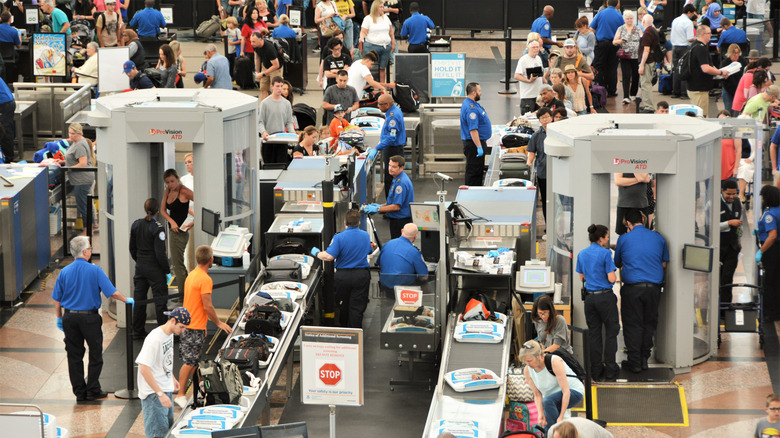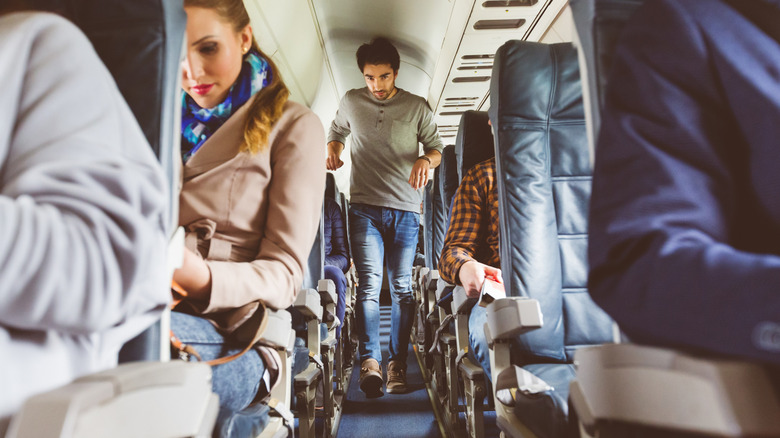Can TSA Body Scanners Affect Your Health?
We may receive a commission on purchases made from links.
If you've flown since 2010, chances are you've stepped into a TSA body scanner at airport security. Although these scanners were first introduced in 2007, their widespread use didn't begin until after a 2009 incident, when a would-be bomber was caught at Detroit Airport with explosives hidden in his underwear. In response, the TSA accelerated the rollout of body scanners, making them a routine part of the screening process.
These high-tech machines — designed to detect weapons, explosives, or other prohibited items — have become a ubiquitous part of air travel in the U.S. But for some travelers, especially frequent flyers or those with health concerns, questions about their safety still linger. Are the scanners exposing us to harmful radiation? Could they pose risks to children, pregnant people, or individuals with medical devices?
Health Digest spoke with Dr. Jason Singh, Chief Medical Officer of One Oak Medical Group, to get answers. However, the short answer is that the risk to your health is quite low.
TSA scanners pose minimal risk
According to Singh, current scanners pose minimal health risks, even for those racking up frequent flyer miles.
"TSA primarily uses millimeter wave scanners," he explained, "which emit non-ionizing electromagnetic radiation at frequencies around 24-30 gigahertz (GHz)." Singh said that, unlike X-rays, these waves don't carry enough energy to damage DNA by ionizing the atoms in our cells. To put into perspective just how low the power output is, Singh said that it's about 10,000 times less than a cell phone. "As such, the exposure is so minimal that specific protection isn't medically necessary," he noted. "However, if you prefer alternatives, you can opt for pat-down screening."
The TSA states that during a pat-down screening, an officer of the same sex will use their hands to check for prohibited items, including on the head, torso, legs, and sensitive areas like the chest and groin. The back of the hands is used for sensitive areas unless additional screening is needed. You may also request a private screening and have a companion present. If you have medical conditions or mobility issues, let the officer know. The procedure is thorough but designed to be respectful, and is explained as it's performed.
Flyers should focus on these health tips instead
Singh added that, for frequent flyers, the focus really should be on other factors affecting your health since any risk associated with the scanners is so extremely low.
One area that he suggests keeping in mind is hydration. According to Abbott, the humidity level in planes tends to range around 10% to 20%. However, humans require more like 30% to 60% to be comfortable. Add that to the effects of low oxygen pressure, which can cause water to evaporate from your skin and lungs, and it's a recipe for dehydration. Singh suggests drinking 8 ounces of water per hour of flight to counteract this effect. Along with this, make sure you are getting adequate nutrition, he said. (Here's the safest way to eat on an airplane.)
Another measure to consider is circadian support, such as light therapy and melatonin, to minimize the effects of jet lag, he said. A portable lightbox like the Verilux HappyLight Mini can easily fit inside a suitcase or carry-on for on-the-go light therapy. The authors of a 2002 systematic review and meta-analysis published by the Cochrane Collaboration say that 2-3 milligrams of melatonin is a good starting dose for managing jet lag. It should be taken at bedtime after darkness has fallen each day of travel.
Finally, Singh advises getting up and moving around the cabin to increase blood flow and reduce blood clot risk. Wearing compression stockings and staying hydrated can also reduce your risk (per HSS). However, you should reconsider wearing skinny jeans on an airplane.


